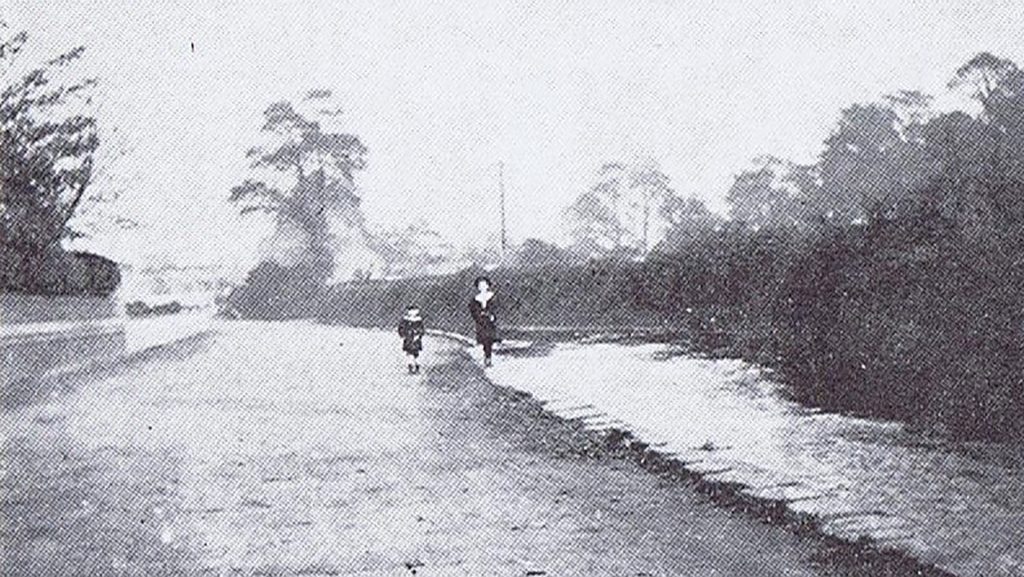The Woollen Mills of Ty’n-y-Parc Road
by Nigel Lewis
The history of our ancient Whitchurch Parish is incredible, but so few people seem to know very much.
If you were asked to produce a list of the old industries in the parish, you’d probably include the tin works at Melingriffith, the College Ironworks behind Whitchurch Common or perhaps the industries in Llandaff North and Tongwynlais associated with the canal and the railways.
How many, I wonder would include the woollen mills in Ty’n-y-Parc Road in Rhiwbina?
Who even knew there were two woollen factories alongside the stream by the Masons Arms in the 1870s-80s in this corner of the village?
According to the Tithe Map of 1841, there was a small hamlet of houses and cottages along Ty’n-y-Parc Road and around the stream, Nant-Waedlyd. There was a detached farmhouse (later to become Ty’n-y-Parc), a farm on the north side of the road (Glanynant) and Elm Cottage on the south side (later Elm Farm). Around these houses were a few small cottages and an early pub.
One of the local landowners at the time was John Homphray, who owned land at Tyn-y-Parc. By 1869, the Cardiff Times newspaper reported that John Homphray was said ‘to have decided upon building a woollen factory on his own land in Whitchurch which, when completed will give employment to 60-80 men, women and children.’
Eleven years later, the 1880 OS map shows that the hamlet had expanded with two woollen factories and a row of semi-detached workers’ cottages (probably single-storey) fronting the main road, called Tyn-y-Parc Row. Further buildings nearer the stream look more substantial and might have been managers’ houses, offices or stores. None of this survives today.
The local woollen industry didn’t last long. By the 1900 OS map, Tyn-y-Parc Row was still there, but the eastern woollen factory had been replaced by cottages. Additional terraced cottages had been built on the opposite side of the road, adjacent to Elm Cottage.
By 1921, Tyn-y-Parc Row had disappeared altogether and was replaced by the 14 terraced houses we see today on the main road. The remaining buildings behind were intriguingly called Tyn-y-Parc Square!
Census information is fascinating too. In 1861, the local population consisted of workers from Melingriffith with a few agricultural workers. And the local pub was called ‘The Swan’. The local cottages were called ‘Queens Square’ and ‘Park Street’; were these local corruptions from ‘Tyn-y-Parc’?
By 1871, the census refers to ‘The Square, Tyn y Park Road’, and the local population was mainly woollen workers, weavers, spinners, and a dress maker. There were still a few mill workers too.
There’s a lovely online article by Dave Hilling, listing his own researches. He tells that the two factories produced flannel, a soft woven fabric. He believes that the western factory (close to where the Masons Arms is now) was the first; and it could have been converted from farm buildings. The eastern factory followed c.1860.
By the end of the century, the eastern factory had finished and had been converted into six small cottages, each with a long rear garden with an outside privy at the end. The cottages are still there today as Upper Tyn-y-Parc Terrace. Dave Hilling and his wife lived in one in the early 2000s.
It’s hard to understand the layout of the area in 1880s, as so little now remains. The wonderful 1911 photograph from Edgar Chappell’s book ‘Old Whitchurch’ shows the view eastwards along Ty’n-y-Parc Road. Today you’d be queuing to turn into the Tesco garage!
Is the Masons Arms a survivor of that time? The brook from the photograph has been re-routed, and Manor Way confuses everything. Glanynant Farm is now the site of the Toby Carvery, with Elm Cottage replaced by the Tesco garage. Even Tyn-y-Parc, home of Count Antonio de Lucovich is no more (but that’s another story!).
What happened to the families of woollen weavers and spinners; the Powells, the Wildes or the Morgans? What about Philip Norton with his two children and five step-children? Did they move away, or did they simply find alternative employment, more suited to the changing times?
Are you part of one of these families? Or do you have any information to help grow the lost history of this part of our local village?
We’d love to hear from you!
Nigel Lewis is a member of AWEN@thelibrary (awen.cymru@gmail.com)

